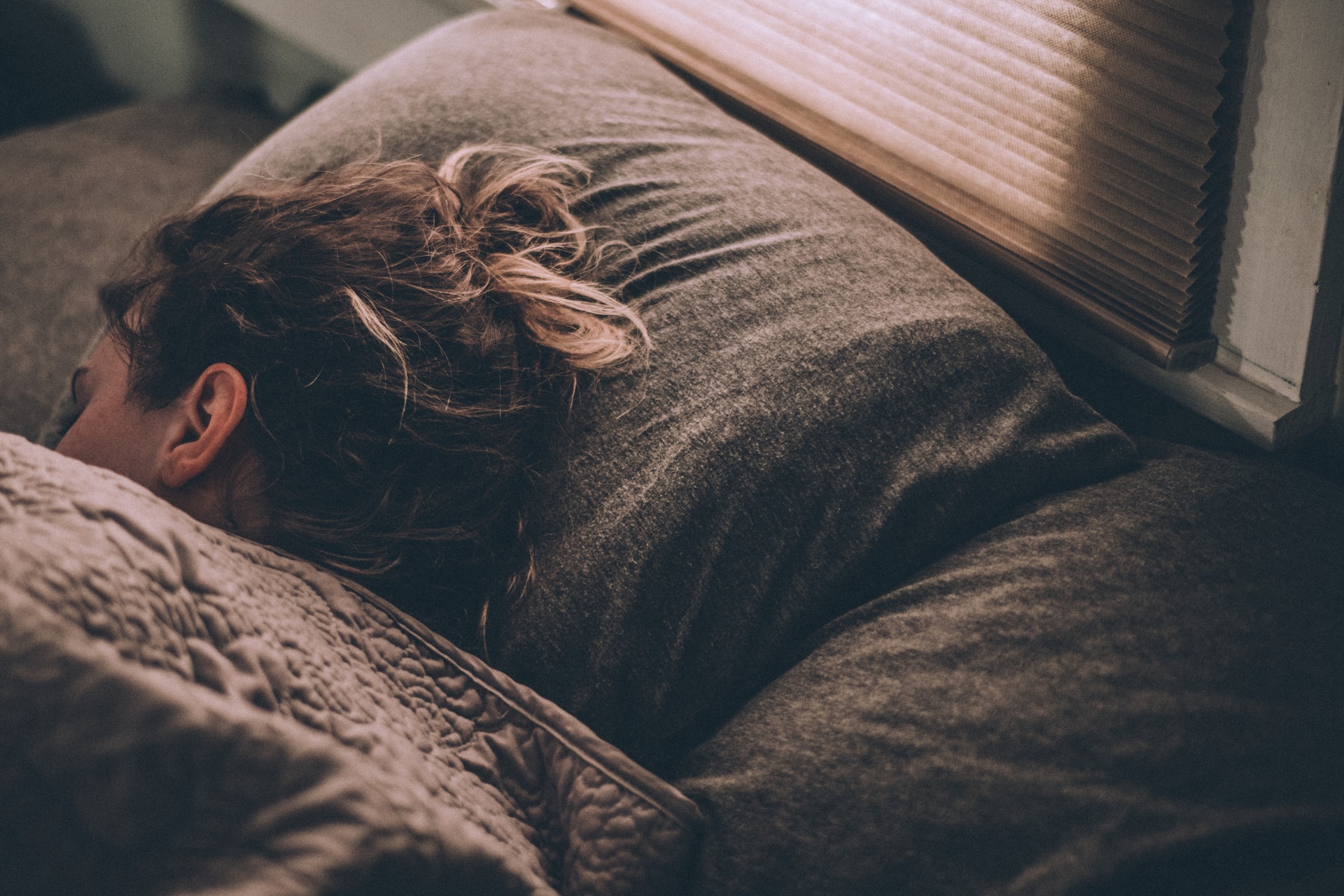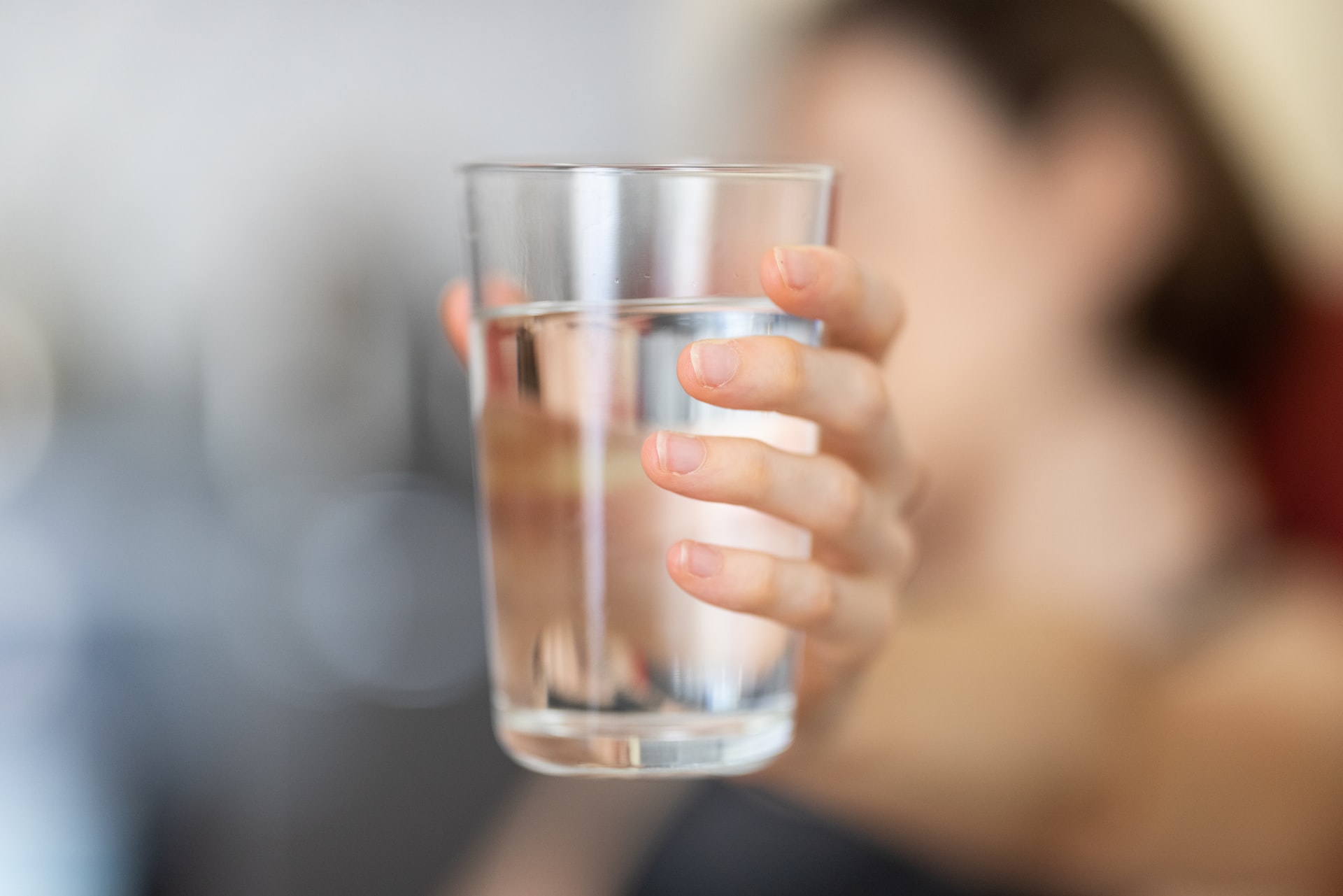The Period Flu Causes Flu-Like Symptoms in the Days Before Your Period—Here’s What to Know


Feeling like you have the flu in the days leading up to your period is common among women. The flu-like physical and emotional symptoms that start anywhere from a few days to two weeks before a woman gets her monthly period are what doctors are calling the period flu.
Period flu includes many symptoms that doctors commonly group under the term premenstrual syndrome or PMS. These symptoms are usually not very severe and most women cope well with them. However, in some women, these symptoms are so bad that they are unable to go about their everyday lives during this time.
As reported by the Office on Women’s Health, over 90 percent of women who menstruate say they get some premenstrual symptoms, such as bloating, headaches, and moodiness. About 20 to 40% of women have more severe PMS-related problems that affect them.
According to Dr. Fenske from Mount Sinai Medical Center in New York City, “PMS tends to be worse early and late in a woman’s reproductive years because there’s just much more fluctuation in hormones during those times.” Period flu should come to an end after menopause. (1)
SYMPTOMS OF PERIOD FLU
Period flu is “kind of similar to PMS symptoms, but it’s a little bit more exaggerated,” says Ob-Gyn Dr. Tamika Cross from Serenity Women’s Health in Pearland, Texas.
Period flu typically strikes at the same point in your cycle—after ovulation and before your period. These episodes generally last no more than two weeks. The symptoms typically start after ovulation, usually improve after your period begins, and disappear by the time it ends.
Women have known for ages that common symptoms such as breast tenderness, irritability, and fatigue are part of having a period. They typically occur a week or so before your period begins. Today these symptoms are known as PMS. However, period flu is often worse and can cause more intense symptoms including:
- joint pain
- muscle aches
- low-grade fever
- nausea
- diarrhea
- headaches
- sinus pain
- dizziness
- chills
CAUSES OF PERIOD FLU
Period flu remains poorly understood by researchers and healthcare professionals. The precise underlying cause is unclear however most agree these flu-like symptoms are due to the varying fluctuations in a woman’s hormones before and during her period.
While estrogen drops during this time frame, hormone-like chemicals called prostaglandins increase which causes uterine cramps, abdominal cramps, and diarrhea similar to the stomach flu. Understanding a bit more about a woman’s hormones can help explain the period flu.
YOUR PERIOD FLU SYMPTOMS AND YOUR HORMONES
Every woman has a unique balance of hormones. These hormones change over time. There are eight major hormone types you can experience over your lifetime, each having a different impact on metabolism, weight, and well-being. Of these, the four key hormones involved during your reproductive life are estrogen, progesterone, luteinizing hormone (LH), and follicle-stimulating hormone (FSH). In addition, prostaglandins also contribute to the menstrual cycle. (2)
Estrogen
There are three estrogens – estrone, estradiol, and estriol – the most potent of which is estradiol. Estradiol is a steroid hormone mostly produced in the ovaries from cholesterol and is the main estrogen found in women. Estrogen levels fall the week before your period causing the achiness of PMS.
Progesterone
Progesterone is a steroid hormone found in the ovaries. It helps maintain the uterine lining and is also thought to affect neurotransmitters in the brain which can then affect serotonin, our feel-good hormone. Fluctuations in serotonin during your menstrual cycle can change how you feel since it normally stabilizes your mood, feelings of well-being, and happiness.
LH
Luteinizing hormone is released by the pituitary gland and stimulates the release of the egg. The onset of LH usually precedes ovulation by 36 hours causing thickening of the uterine lining in preparation for the fertilized egg.
FSH
Follicle-stimulating hormone is also produced in the pituitary gland, stimulates egg development, and promotes the release of estrogen.
Prostaglandins
These are lipid compounds found in almost all tissues of the body. During your period, prostaglandins trigger muscles in your uterus to contract. These contractions help expel the uterus lining. Higher levels of prostaglandins can cause more severe menstrual cramps. Some of the prostaglandins enter the bloodstream, causing headaches, nausea, vomiting, and diarrhea, and the feeling of being flushed or feverish. (2)
SELF CARE OPTIONS FOR PERIOD FLU SYMPTOMS
There are lifestyle changes you can make to help ease the symptoms of period flu until your period starts at which time these symptoms should disappear. These can also help you maintain a healthy body and mind throughout your life. These options also answer questions like how to treat period flu, how to stop it, cure it, and avoid it.
Drink plenty of clean filtered water
Estrogens have been detected in numerous studies of wastewater influents and effluents and the source water of drinking water treatment plants. Although these levels are low, more research needs to be done to study the long-term effects on humans. (3)
Exercise
Living a lifestyle that includes routine exercise already prepares your body to handle your period with little discomfort. Although you may not feel like it, some exercise during period flu can help you feel better. According to the American College of Obstetricians and Gynecologists aerobic exercises such as biking, swimming, running, and brisk walking for 30 minutes a day may help alleviate period flu symptoms.
Get plenty of sleep
According to the CDC, getting between 7 and 9 hours of sleep per night is most optimum. When you are feeling achy and flu-like, sleeping more may help.
Heat therapy
Hot baths and heating pads can ease muscle aches, joint pain, and cramps.
Watch what you eat
It cannot be stressed enough that eating a healthy diet is best not only as a regular practice to maintain a healthy body, but also it can help ease the symptoms of period flu.
Herbal products and alternative medicines
Scientific studies on the effectiveness of these products for PMS and related conditions such as period flu have produced mixed results. Herbal products and dietary supplements such as St. John’s wort, calcium, or pyridoxine (vitamin B6) have also been known to help. The Office on Women’s Health reports improved symptoms with herbal supplements, such as evening primrose oil, black cohosh, and chaste berry. Consult your healthcare provider for dosages. (4)
Other practices that may help reduce period flu symptoms include:
- yoga
- massage
- meditation
- deep breathing
- relaxation techniques
- acupuncture
- cognitive behavior therapy
Women who have severe period symptoms each month may opt for birth control pills which can help by regulating hormone levels. Ninety percent of women who take birth control pills experience reduced menstrual pain. However, changes in your diet may lead to similar results. Try the following dietary suggestions before going the medical route. (5)
DIET, ESTROGEN, AND PERIOD FLU
Your diet can play a huge part in easing the symptoms of period flu. Eating a low-fat, high fiber diet of mostly plants is the best diet for many people. During your period, continue to eat moderate amounts of healthy fruits and vegetables. Avoid animal products and oils including eggs, dairy, fats and oils, fried foods, sugar, processed foods, and refined grains including processed bread, cereals, and pastries. Steer clear of alcohol and caffeine.
Many plants contain phytoestrogens, plant compounds with a similar structure to estradiol. They behave like estrogen when eaten. The list of plant foods that contain phytoestrogens based on research done at the University of Helsinki Finland includes soybeans, tofu, tempeh, soy beverages, flax seeds, sesame seeds, wheat, berries like strawberries, cranberries and raspberries, oats, barley, dried beans, lentils, rice, mung beans, dried fruits especially dates, prunes, and dried apricots, apples, carrots, cruciferous veggies like broccoli, cauliflower, cabbage, and Brussels sprouts; wheat germ, rice bran, and whole-grain bread containing some of these foods. (6,7)
Various kinds of phytoestrogens are also found in many medicinal herbs, including red clover, black cohosh, alfalfa, hops, licorice, and turmeric. Daily intake of 30-50 mg of phytoestrogens has been shown to have beneficial stabilizing effects on hormone balance. Of all the phytoestrogen foods, soy is number one, containing the highest levels. Tofu and popular soy drinks, especially among vegetarians and vegan eaters, can become a problem if not monitored. (8)
Various beneficial health effects have been ascribed to phytoestrogens, such as a lowered risk of menopausal symptoms, lowered risks of cardiovascular disease, obesity, type 2 diabetes, and some cancers. Phytoestrogens found in some plants are classified as endocrine disruptors. These chemicals may also interfere with your hormonal system when consumed at high doses. The question of whether phytoestrogens are beneficial or harmful to human health is rather complex and may depend on age, health status, and even the health of your gut microbiome.
The more estrogen-based foods you consume, the more likely your uterine lining becomes abnormally thick. As a result, when it begins to break down during your menstrual cycle, this process creates more prostaglandins, resulting in higher levels of pain. This is why eating a lot of fiber is important as it absorbs estrogen byproducts and clears them out of the body through your intestines. (5)
In addition to consuming too many estrogen-containing foods, estrogen replacement therapy, a popular treatment for symptoms of menopause, may also cause estrogen to reach problematic levels. Interestingly, the symptoms of high estrogen levels in women look very much like the period flu. These include:
- bloating
- swelling and tenderness in your breasts
- fibrocystic lumps in your breasts
- decreased sex drive
- irregular menstrual periods
- increased PMS symptoms
- mood swings
- headaches
- anxiety and panic attacks
- weight gain
- hair loss
- cold hands or feet
- trouble sleeping
- sleepiness or fatigue
- memory problems
MEDICINAL TREATMENT OPTIONS
Hormonal contraceptives: These may be prescribed to help improve hormone-related symptoms of PMS and period flu.
Antidepressants: Selective serotonin reuptake inhibitors may help with psychological symptoms. Most of the time they are prescribed daily, but sometimes can be used for just the two weeks leading up to your period.
Painkillers: Over-the-counter medications such as nonsteroidal anti-inflammatory drugs like ibuprofen may be used to reduce aches and pains.
Diuretics: Water pills may be taken to help reduce bloating due to water retention.
Supplements: Calcium has been recommended, but other supplements, including vitamin D, herbal remedies like St. John’s Wort, and acupuncture, do not have enough evidence to support their recommendation. (9)
COMMON FAQs ABOUT PERIOD FLU
- Is period flu common? Yes. Up to 90% report PMS and up to 40% report flu-like symptoms.
- Can period flu happen after your period? No, it occurs only during the two weeks of ovulation and menstruation.
- Does period flu get worse with age? Yes. PMS symptoms may get worse as you reach your late 30s or 40s and approach menopause. This is especially true for women whose moods are sensitive to changing hormone levels during their menstrual cycle.
- Can you get period flu on the pill? Not usually. According to Planned Parenthood, many women use hormonal birth control to help with period issues like cramps and PMS. Birth control pills, the ring, and the patch can make periods lighter, more predictable, and less painful.
- Can ERT (estrogen replacement therapy) cause period flu symptoms? Yes.
- Can period flu happen after a hysterectomy? Yes, if only your uterus was removed and the ovaries are still in place, period flu can still occur.
- Is it period flu or real flu? Track your ovulation. If symptoms start here, then it’s more likely to be period flu. Regular flu happens any time.
- Is it period flu or COVID? Get tested immediately to know for sure.
- Is it period flu or the vaccination I just received? Some vaccinations may mimic period flu. Comparing vaccination date with ovulation date should help you determine what’s going on.
Women can usually manage their period flu symptoms with self-care, dietary changes, and OTC medicines. A doctor’s advice may be helpful if your period flu is interfering with your ability to carry out your daily activities. No matter how severe your symptoms are, know that the period flu will disappear with the onset of your period. Take care of yourself, eat less, drink more water, sleep, and above all, stay positive.
SOURCES
- https://www.ncbi.nlm.nih.gov/books/NBK279265/
- https://elara.care/cycle-hormones/menstrual-cycle-hormones-and-their-functions/
- https://www.ncbi.nlm.nih.gov/pmc/articles/PMC2854760/
- https://www.medicalnewstoday.com/articles/period-flu#home-remedies
- https://www.pcrm.org/good-nutrition/nutrition-information/using-foods-against-menstrual-pain
- https://www.degruyter.com/document/doi/10.1351/pac199870091759/html
- https://www.ncbi.nlm.nih.gov/pmc/articles/PMC3288319/
- https://pubmed.ncbi.nlm.nih.gov/10552547/
- https://www.mayoclinic.org/diseases-conditions/menstrual-cramps/diagnosis-treatment/drc-20374944









